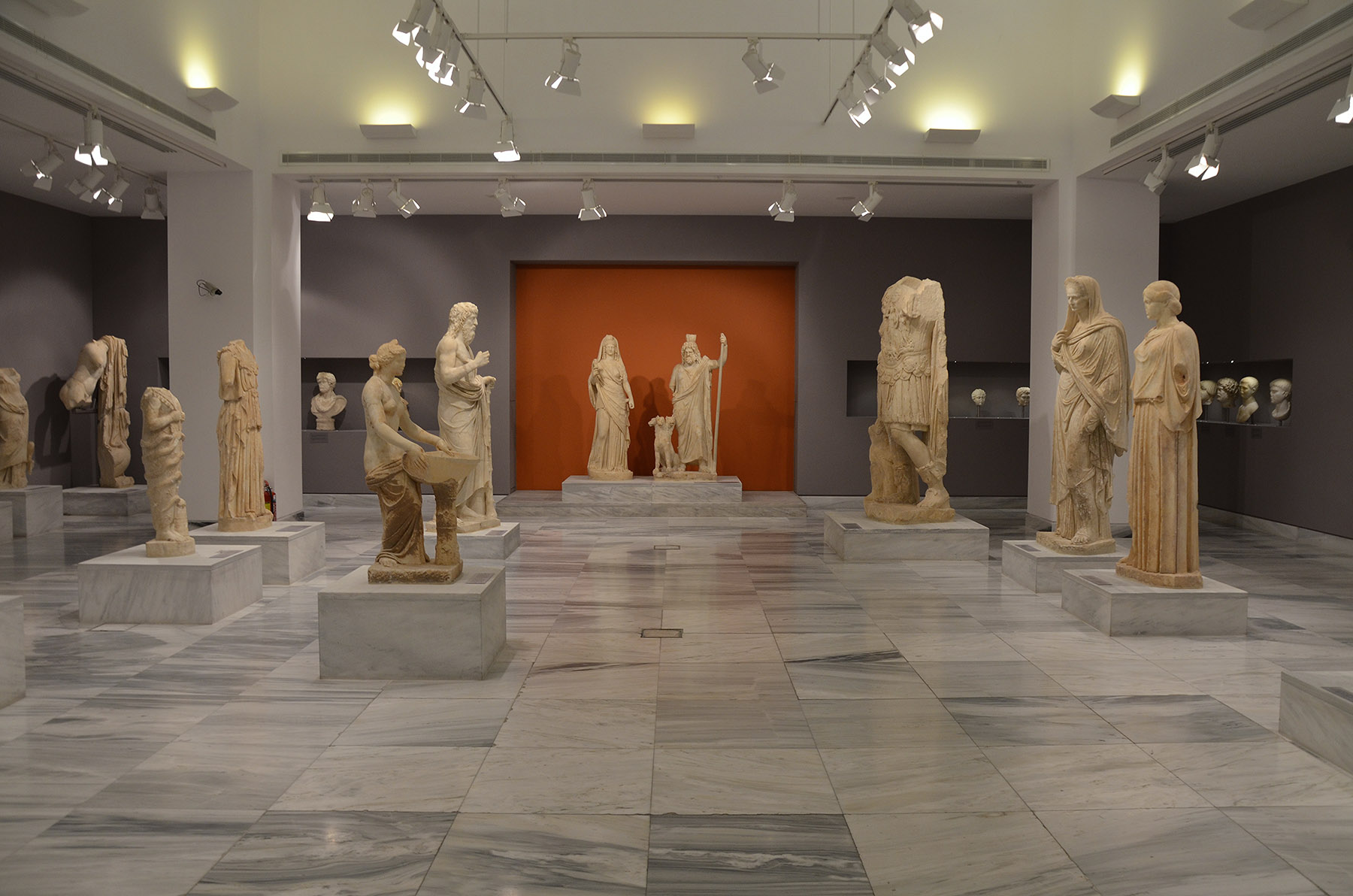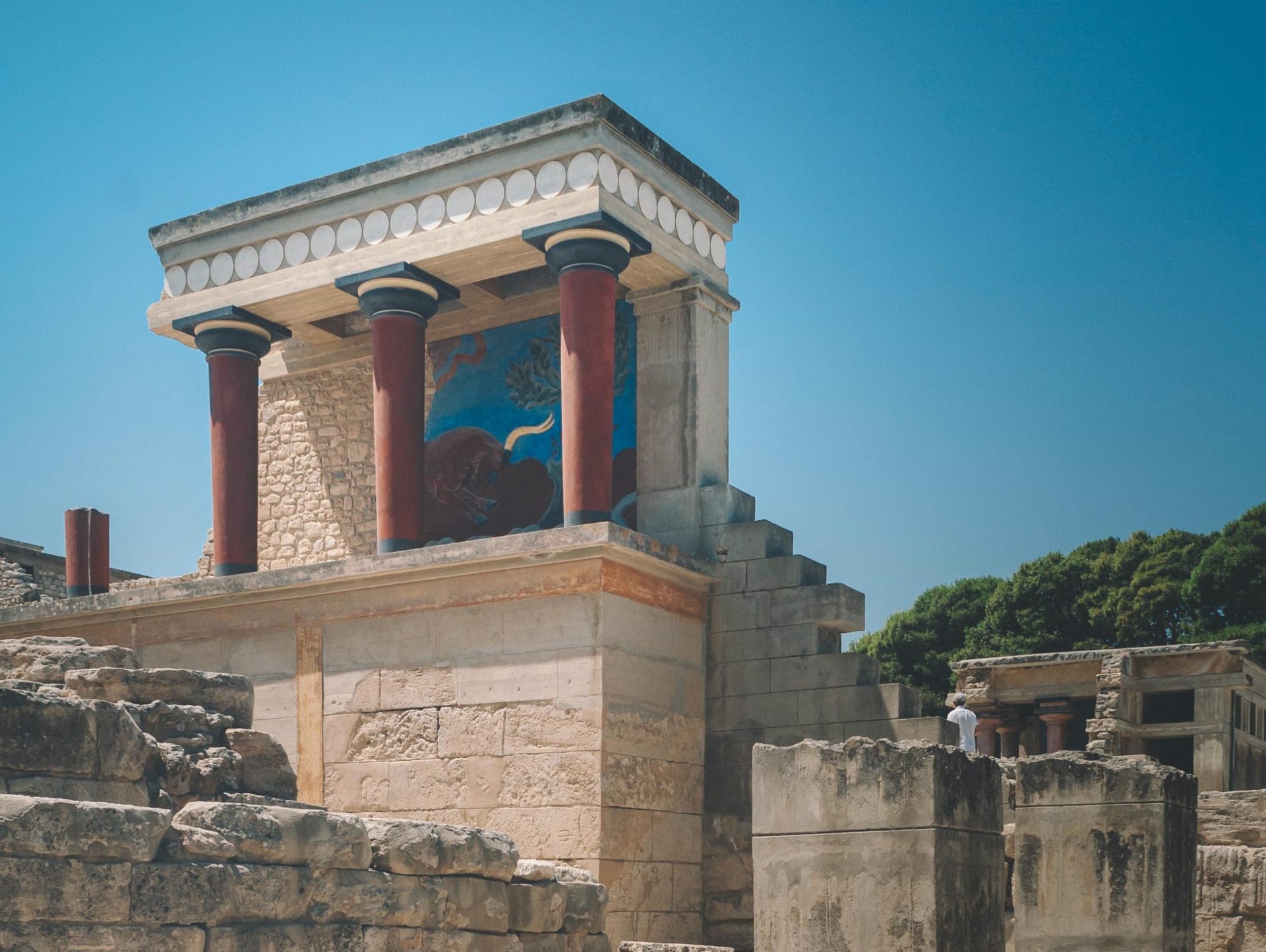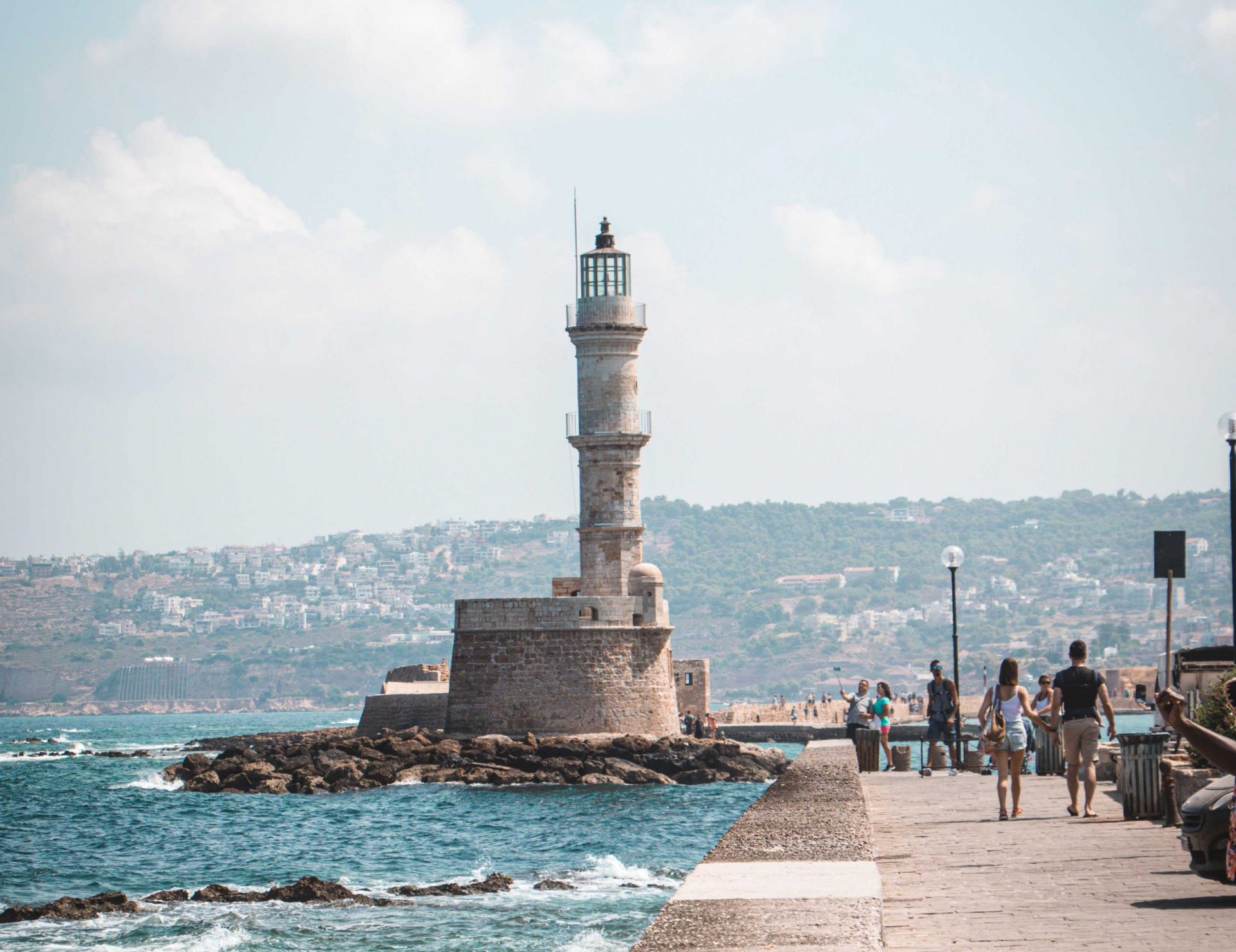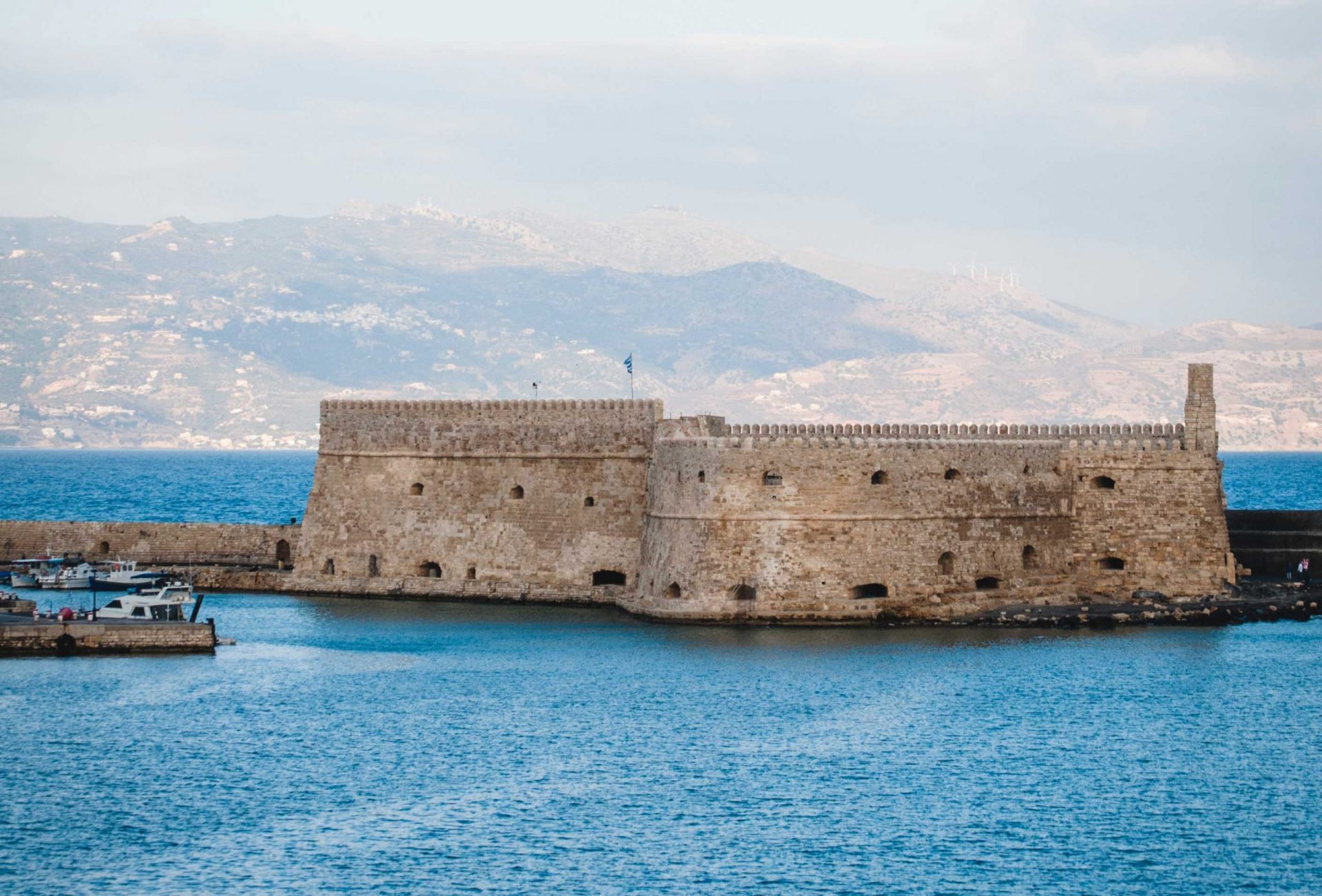Places to visit
Agia Pelagia
The coastal resort village of Agia Pelagia is built along a wonderful sandy bay, where the sea is calm and the water is crystal clear even during the windy days. The bay of Agia Pelagia is ideal for combining sea sports with relaxation. Guests will find well trained instructors that offer lessons for water sports such as water-ski, windsurfing , canoe, and SCUBA diving aboard small boat trips that take you around the beautiful area. Agia Pelagia is very popular with tourists, since it provides all the amenities expected of a modern resort, but on the other hand it is ideal for a more quiet accommodation in Crete away from crowded and busy areas of Malia and Hersonnisos, and is perfect for families, couples and romantic holidays in Crete.
Knossos
A must see while in Crete. The archaeological site of Knossos is located just 5 km southeast of the city of Heraklion On the ruins that you now see of the neolithic settlement, the first Minoan palace was built in 1900 B.C. where the dynasty of Minos ruled. It was destroyed in 1700 B.C and a new palace built in its place. The palace covered an area of 22,000 sq.m, it was multistorey and had an intricate layout plan. Due to this fact the Palace is connected to thrilling legends, such as the myth of the Labyrinth with the Minotaur. Between 1.700-1.450 BC, the Minoan civilization was at its peak and Knossos was the one of most important city. During these years the city was destroyed twice by earthquakes in 1.600 BC and 1.450 BC.
Heraklion Archaeological Museum
Heraklion Archaeological Museum is one of the most important museums in Greece if not in Europe. Visitors will see objects from the everyday life of the Minoans, artifacts of extraordinary art, like worship items, ceramics, lithography works and stamps. In addition, the famous double headed labrys, sarcophagus and many more. Of course, the collection includes the ‘stars’ of the museum and emblems of Minoan Civilization: the mysterious disk of Phaistos Crete, the snake Goddess, the bee and the ring of King Minos.
Morozini Fountain
The fountain of Morozini (known as Lions) is one of the nicest Venetian monuments of Candia (current Heraklion). The fountain was watered by the spring of Karidaki and the watered traveled about 15km in a gigantic aqueduct. The fountain takes its name after the Capitan Generale Francesco Morozini. During his rule, the aqueduct was constructed to water the thursty town of Candia. Till then, most water came from wells and rain-storage tanks. The aqueduct was inaugurated on April 25th, 1628, i.e. on the feast day o Saint Mark, the protector of Venice. The tank of the fountain has an octalobe (eight lobes) shape so as to enable about 40 people to getting water at the same time. It was decorated with relief scenes from the Greek mythology, particularly marine figures such as newts and dolphins, and several coats of arms of the Venetians. Above the tank there are four lions, from the mouths of which the water flows. The top of the fountain was dominated by a big statue of Neptune, which collapsed, probably by an earthquake or by the Ottomans who generally destroyed the statues due to being offensive to their religion. In 1847 the Ottomans changed the appearance of the fountain by adding marble columns and an inscription that read “Fountain of Abdul Medjit”. Also they pierced the lobes and placed taps, destroying the reliefs.
Cretaquarium – Thalassocosmos
Cretaquarium – Thalassocosmos is one of the most important aquariums in Europe. It started its operation in December 2005 in the former American Base of Gournes and immediately became a pole of attraction for thousands of visitors. Thalassocosmos was an idea and is maintained by the Greek Centre for Marine Research located next to it. Visitors can wander through the long corridors of the aquarium, observe with microscopes and readinformational texts accompanying the sixty tanks with 2500 species of marine life. In the tanksthe visitor will see from big sharks to tiny seahorses and jellyfish.
Historical Museums
The Historical Museum of Crete offers an overall picture of the history and culture of Crete from the early Christian times to the 20th century, while seasonal exhibitions include subjects of Byzantine or modern art, important personalities of Greece and presentation of historical events. Chania city is home to the Historical Archive of Crete with more than 170 archival collections and the second largest Nautical Museum in Greece, which aims to preserve the great maritime tradition of Crete. The Byzantine Museums of Heraklion, Chania and Rethymnon are also very special venues dedicated mainly to ecclesiastical art. The war collections and archives intend to commemorate the resistance and struggle of the Cretans against the various occupiers of Crete. The most important of these are the War Museum of Rethymnon at Chromonastiri, the Historical Museum of Vorizia, the Museums of National Resistance at Therisso and Heraklion, the Historical Museum of Keramia, the Museum of Skalidis at Pervolia, the War Museum at Askyfou and the Military Collection of Argyrakis at Episkopi. Additionally, the German Tunnels at Platanias and Makasi Gate at Heraklion Walls are important historical sites.
El Greco Museum
The museum of the painter Domenikos Theotokopoulos (El Greco) is located opposite the Byzantine Church of Panagia at position Theotokiana, by Fodele. The building that houses the museum is believed to have been the house of the greatest Cretan painter (1541-1614)as he mentioned that he was born 25km northwest of Heraklion and next to a Byzantine Church. The building operates since 1998 with an exhibition of replicas of works of El Greco. Also there is information about his family and a room has been transformed into a painting workshop.





